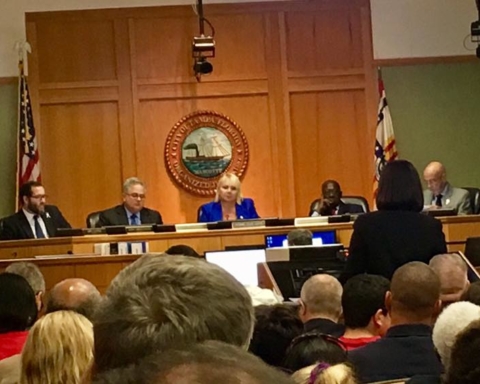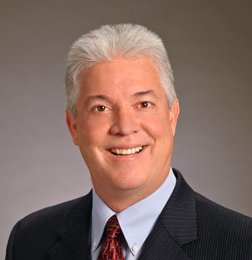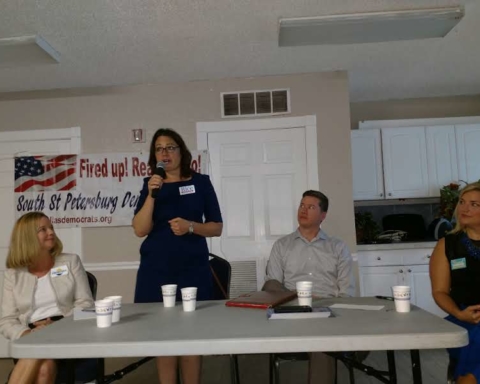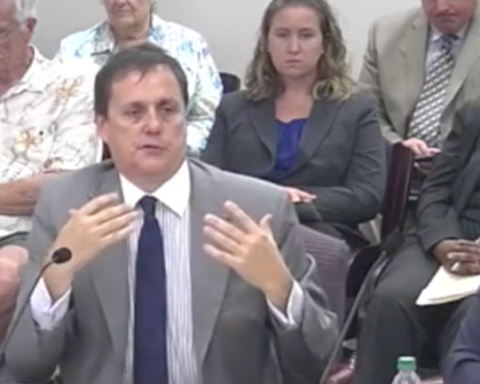Citizen-activists in Seminole Heights were pleased (but still skeptical) when then-Florida Department of Transportation Secretary Jim Boxold told a state legislative committee last December that it was time to hit the “reset” button on the ever-controversial Tampa Bay Express Project.
“We probably have 2-3 years before that project is what we call ‘production ready,’ ready to turn dirt,” Boxold told the Senate Transportation Committee. “And so we’re going to sort of hit the reset button, bring in additional staff or different staff to manage that project and work more intensively with the local communities.”
Enter David Gwynn, FDOT’s District 7 Secretary, who was recently hired to do just that.
“He seems to be very sensitive to the fact that there’s been a challenge with communities that we’re going to be more impacted than not, and recognizes that he’s going to have to build the trust that was lost by the first TBX exercise,” says Kimberly Overman, president of the Heights Urban Core Chamber — Business Guild of Seminole Heights. Overman is a candidate for the Hillsborough County Commission.
“It’s not just that he’s saying the right things and he’s listening, but he really does seem to want to make a difference. And I think that message is getting across to the neighborhoods,” says Rick Fernandez, president of the Tampa Heights Civic Association. “And for those of us who have been fighting this fight for the last couple of years, it’s a breath of fresh air.”
Gwynn met with the members and staff of the Junior Tampa Civic Heights Association and the Tampa Heights Civic Association last month. While Gwynn says he already understood some of their concerns, he learned much more by meeting with them. He also stressed to them that it really is a new day at FDOT when it comes to evaluating how to improve transportation in the region.
“I can say that he definitely listened and was very respective to our position,” says Lena Young-Green, president of the Tampa Heights Junior Civic Association. “At the Thursday’s meeting, both he and his … staff said they seriously want to work with the residents and community leaders. While we have heard this before, this time it seemed to have some truth with it, one commitment that I am hanging on to. There were several times when meeting attendees actually clapped for the secretary and applauded comments that he was making on Thursday.”
“I’m hoping that the more transparent we can be with people, the more they’ll understand we are being an honest partner in this,” he said while speaking with FloridaPolitics.com from his office at FDOT’s headquarters on North McKinley Street in Tampa recently.
When it was first introduced in 2015, TBX was branded as the biggest public works project in the history of the Tampa Bay region. The plan would have ultimately remade I-275, I-4 and I-75, and bring new toll lanes from Pasco County south to Manatee County and from Pinellas County east to Polk County.
While most of the political establishment in Hillsborough County (including the MPO, Tampa International Airport, the Tampa Downtown Partnership, the Greater Tampa Chamber of Commerce and Mayor Bob Buckhorn) embraced the plan, it was bitterly opposed citizens and neighborhood groups in Seminole Heights, Tampa Heights and V.M. Ybor, the three Tampa neighborhoods which would be most deleteriously affected, with over 100 homes earmarked for relocation or demolition.
TBX is now dead. It received last rites in May, now repackaged as Tampa Bay Next. And while those plans for express toll lanes are still on the board, they may not happen on the downtown interchange of I-275, the part that already led FDOT to purchase homes in the area for right-of-way.
When Tampa Bay Next was announced, skepticism remained.
“I don’t see that much that has changed,” Sunshine Citizens secretary Michelle Cookson told the Tampa Bay Times. “If they have some plan they can show me where they’re not going to devastate the heart of this city and roll everything over us, I’d be interested in seeing that.”
Gwynn has announced that while FDOT had over $100 million set aside for purchasing right-of-way this year, the agency has “repurposed” those funds and will not spend any money pursuing the purchases of any more homes in the affected neighborhoods.
Gwynn says his job is to let people know that while TBX was a set plan of action, Tampa Bay Next is “a process” in which improvements in transit are being looked at contemporaneously.
“We’ve started to take another look back and say, ‘wait a minute, let’s take another look and say is this an all or nothing thing or can we do things maybe a little bit differently, perhaps express lanes might be appropriate in some areas, but maybe they’re not appropriate in all areas. Maybe we need to look at other concepts that we previously hadn’t looked at.”
“Tampa Bay next is a process, it’s not a project, and also saying if we’re not going to necessarily have those express lanes in right away, what else can we do so people don’t have to wait a long, long time for relief in areas that we can do something more immediately,” he says.
The most specific concrete project FDOT is dusting off their shelves is a plan to add a third lane to both directions of I-275 approaching the Howard Franklin bridge on the Tampa side.
Gwynn says for “a relatively low cost” of $25 million that project can get started in the next year and a half, and last for “a good seven to eight years.”
Another project getting kick-started that wasn’t slated to be undertaken until 2024 is what is known as the Heights Mobility Project, an evaluation and reworking of the commercial corridors in Seminole and Tampa Heights as they interact with the neighborhoods.
“FDOT is listening, and they’ve moved that project up,” Overman says. “They’re using guidelines on Smart Street and Vision Zero and the new complete streets standards they are going to adhere to.”
FDOT has already responded to complaints from Metropolitan Ministries on North Florida Avenue and is adding three crosswalks as part of an active design build project. They will include overhead RRFBs (rectangular rapid flashing beacons) and pedestrian-activated lighting.
Most crucially as far as many in the local neighborhoods are concerned is that FDOT has stopped purchasing right of way. To date, Gwynn says that they have relocated 60 historic properties in Ybor City.
Tampa Heights activist Lena Young Green says that “while we have heard this before. this time it seemed to have some truth with it.” She says she intends to hold Gwynn to his word to provide “Transportation 1010 training” to bring citizens up to speed on the technical process that go into transportation planning and its implications.
The mechanics of transportation planning and policy can be intimidating, says activist Chris Vela. He says those are some of the challenges to sustaining public attendance and participation at a future TBNEXT meeting.
Vela says he’d like to see FDOT’s Regional Transit Feasibility Study incorporate more public meetings with the community. “(A)t least one meeting per county from what we have seen from the latest stage of this plan. Looking at corridors and the type of transit systems to move people is not enough,” he says.
A concept that the neighborhood activists have seized upon is a proposal by urban planner Joshua Frank that would replace the Seminole Heights and Tampa Heights portions of I-275 with a landscaped boulevard featuring bike and pedestrian paths and (potentially) light commuter rail.
Gwynn has told neighborhood activists that FDOT is seriously reviewing Frank’s concept, but there is a caveat to his open-mindedness on the subject.
“The only concern is we have a lot of traffic coming down from I-275 now, and if we turn it into a boulevard that demand is still going to be there,” he muses. “Some of it might go down I-75, but a lot of it is probably not. Traffic is like water. It takes the path of least resistance.”
Simply the fact that Gwynn hasn’t dismissed the concept is hugely significant says Fernandez. “Even if they don’t go that route, they are legitimately looking at it and talking about it out loud. I would never have dreamt that two years ago.”
Gwynn is also appreciative of the intensity of the neighborhood activists.
“They’ve got a lot of passionate people who care about their community and are standing up for it, and I’ve got to respect them for that, that community’s lucky to have them. On one hand, we have an obligation to do something for transportation, but maybe what we first came up with didn’t take into account some of the community impact as much as we could. So and we’ve got some concepts.
“I’m pretty confident that we’ll lessen the impacts if not eliminate them, I can’t say we’ll eliminate them because I don’t know if that’s possible and still do something but I feel pretty confident we’re going to reduce impacts and it may cost a little more to build the projects, but if we can offset that with lesser impacts to the community, then maybe that’s worth it.”









